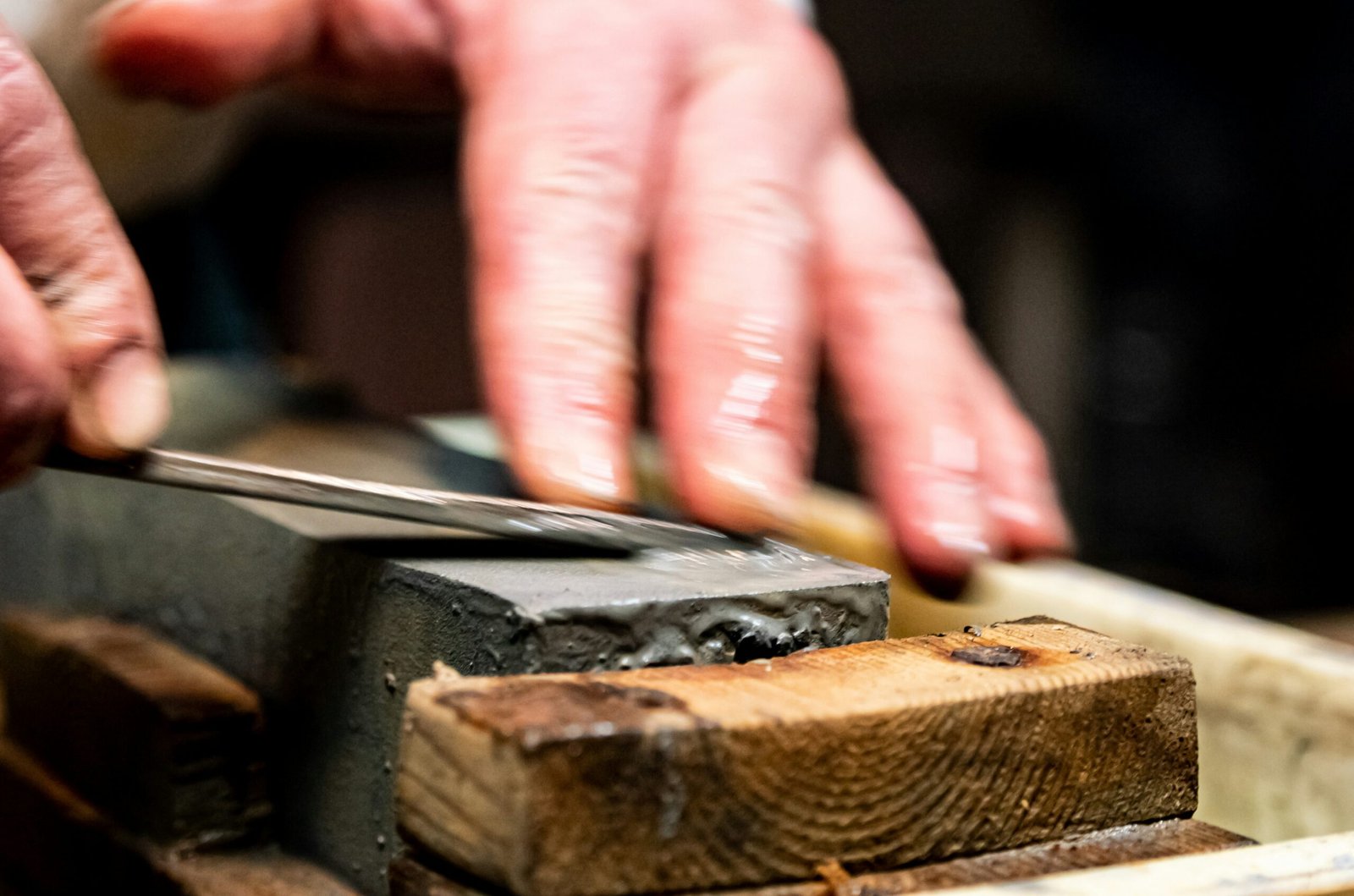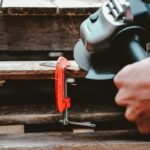Introduction to Knife Sharpening Techniques
Knife sharpening is an essential skill in both professional and home kitchens, as a sharp knife enhances efficiency and safety while preparing food. Dull knives not only require more force to cut through ingredients, potentially leading to accidents, but they also compromise the quality of cuts, impacting the final presentation of dishes. Thus, understanding the various knife sharpening techniques is crucial for maintaining kitchen tools at their optimal performance.
There are several methods of sharpening knives, each with its unique benefits and drawbacks. The most common techniques include whetstone sharpening, honing steel, electric sharpeners, and manual sharpeners. Whetstones are favored by many chefs for their ability to provide precision and a customizable angle during the sharpening process. These stones can vary in grit, allowing for sharpening as well as polishing. On the other hand, honing steel is often misunderstood; while it’s primarily used to realign the blade edge between sharpenings, it does not actually sharpen a dull knife.
Electric sharpeners offer a quick solution, yet they may remove more material from the blade than necessary, potentially shortening the knife’s lifespan. Manual sharpeners are popular among home users for their ease of use and effectiveness. Regardless of the method chosen, familiarity with sharpening techniques is vital, as it directly correlates to the care and longevity of kitchen knives. This discussion naturally leads us to the ongoing debate of push versus pull techniques in knife sharpening. Each approach has its proponents and implications for achieving a sharpened edge, underscoring the significance of mastering the fundamentals of knife maintenance.
Understanding the Push Technique
The push technique in knife sharpening involves moving the knife away from the body during the sharpening process. This method, commonly used with whetstones, not only influences the way the blade interacts with the sharpening surface but also enhances the overall pressure distribution across the edge. When employing the push technique, the sharpener applies force in a direction that allows for greater control and precision, which is critical in achieving a fine edge.
One of the key advantages of this technique is that it ensures consistent contact between the knife edge and the sharpening medium. As the user pushes the blade forward, the entire length of the edge engages with the stone, facilitating an even refinement of the blade. This contrasts with pulling techniques, where the edge may not make uniform contact, potentially leading to uneven sharpening and a less effective final result.
Moreover, the push technique can be particularly beneficial for specific types of knives, especially those with a thicker spine or those requiring a more aggressive sharpening approach. For instance, when sharpening a chef’s knife, using the push method allows for effective removal of material from the blade, resulting in a sharper edge that can perform optimally during food preparation tasks. Additionally, this technique is beneficial when honing knives that have not been maintained regularly, as it can assist in quickly restoring the blade’s original sharpness.
In conclusion, the push technique in knife sharpening is an essential skill that contributes significantly to effective edge refinement and pressure distribution. Understanding its application and benefits deepens one’s appreciation for the sharpening process, ensuring knives are kept in prime condition for both professional and home cooks alike.
Exploring the Pull Technique
The pull technique is a popular method for sharpening knives that involves drawing the blade toward the body during the sharpening process. This approach is favored by many chefs and culinary enthusiasts due to its unique mechanics and advantages. When employing the pull technique, the knife is positioned at a specific angle against the sharpening medium, usually a whetstone or honing rod. As the blade glides down the sharpening surface, it effectively removes material from the edge, honing it to a sharper finish.
One of the primary advantages of the pull technique is enhanced control. By pulling the knife toward oneself, the user can maintain a consistent angle throughout the sharpening process, which is critical for achieving a precise edge. This method also allows for greater visibility of the blade and the sharpening surface, enabling the user to monitor progress closely. Additionally, the pull technique is less likely to push the blade off-course compared to the push technique, leading to a more accurate sharpening experience.
Moreover, the pull technique is particularly beneficial in situations where safety and comfort are paramount. For instance, this method keeps the user’s hands and fingers clear of the sharp edge, minimizing the risk of accidental cuts. It can also be advantageous for those with limited arm strength or mobility issues, as the motion is generally less strenuous than pushing the knife away. While both the pull and push techniques have their merits, the choice ultimately depends on personal preference and the specific sharpening task at hand.
In general, the pull technique is a valuable sharpening method that combines safety, control, and effectiveness. Understanding when and how to apply this technique can significantly enhance knife maintenance and performance in various culinary contexts.
Comparative Analysis: Push vs. Pull

When sharpening a knife, the choice between the push and pull techniques can significantly impact the effectiveness and safety of the process. Understanding the key differences between these two methods is vital for anyone looking to maintain their kitchen utensils properly.
The push technique involves moving the blade away from the body while applying pressure against the sharpening surface. This method allows for more control over the angle of the blade, enabling sharpeners to achieve a consistent edge. Additionally, using the push technique can minimize the risk of slipping, particularly for novices, as it naturally directs the blade away from the user. This action can be especially beneficial when handling various blade shapes. However, some users might find that maintaining the right sharpening angle is more challenging with this technique without prior experience.
In contrast, the pull technique entails drawing the blade towards the body. This approach can be advantageous for achieving a fine edge on a knife, as users can easily monitor the sharpening process. The pull method allows for better feedback regarding the sharpening angle, ensuring that the edge is maintained. However, it may pose a safety risk, as there is a higher probability of losing control and accidentally cutting oneself. Users must ensure they are using appropriate safety measures, such as keeping fingers away from the blade’s path.
Ultimately, both techniques hold their merits and drawbacks. The choice largely depends on the individual’s experience level, the type of knife being sharpened, and personal safety preferences. A thorough understanding of these methods can help users make informed decisions, leading to more successful knife maintenance in the kitchen.
Choosing the Right Technique for Your Knife Type
When it comes to sharpening knives, selecting the appropriate technique is crucial and largely depends on the specific type of knife being used. A primary consideration is the blade shape, as various designs may benefit from different sharpening methods. For instance, knives with a straight edge, like chef’s knives or utility knives, typically perform best with a push technique. This method allows for even blade contact against the sharpening surface, resulting in a smooth and consistent edge.
On the other hand, knives with a more pronounced curve, such as boning or filleting knives, may require a pulling technique. This approach enables better control, allowing the user to follow the natural contour of the blade, providing effective sharpening while preserving the delicate edge. Furthermore, some blades possess unique materials or finishes which can also influence the sharpening technique employed. For example, ceramic knives, known for their hardness, can be more easily sharpened using a pulling motion to reduce the risk of chipping.
In addition to blade shapes, the thickness of the knife can also dictate the sharpening method. Thicker knives, like those used for cleaving or chopping, might benefit from a combination of pushing and pulling techniques, as this can help maintain the robust edge required for their heavy-duty tasks. Conversely, thinner blades could require gentler methods to avoid excessive wear or damage.
Ultimately, understanding the characteristics of your knife is essential for optimal sharpening. By taking into account factors such as blade shape, material, and thickness, you can effectively determine whether to push or pull, enhancing the knife’s performance and longevity with each sharpening session.
Safety Tips for Knife Sharpening
Sharpening a knife requires careful attention to safety, as the process involves handling a sharp tool that can cause injury if not done correctly. To mitigate risks, it is essential to adopt best practices that ensure both the knife and your hands remain secure throughout the procedure. First and foremost, always choose a sturdy, stable surface for sharpening. A non-slip cutting board or a dedicated sharpening station is recommended to prevent any movement that could lead to accidents.
Proper hand positioning is critical when sharpening a knife. It is advisable to grip the knife’s handle firmly while maintaining a safe distance from the blade’s edge. When using a sharpening stone or any other sharpening tool, position your non-dominant hand behind the blade at a safe distance. This positioning not only provides better control but also minimizes the risk of contacting the blade. Always ensure that you are in a well-lit area to allow for clear visibility of your actions, which can aid in avoiding potential mishaps.
When sharpening, employ a consistent motion, whether using a pushing or pulling technique. It is vital to push away from your body, as this reduces the risk of an accidental slip towards your hands. If you are using a powered sharpener, make sure to follow the manufacturer’s instructions carefully to avoid injuries or damage to the tool. Additionally, maintaining your sharpening tools in good condition is crucial for ensuring safety; replace any worn-out or damaged equipment promptly. Finally, after sharpening, ensure that you clean the knife properly and store it safely, away from reach of children and pets.
Common Mistakes in Knife Sharpening
Sharpening a knife is an essential skill that greatly impacts the effectiveness of the tool in various kitchen tasks. However, many individuals make common mistakes during this process that can lead to suboptimal results. Understanding these pitfalls can significantly enhance one’s sharpening techniques, ensuring better performance and longevity of the knife.
One prevalent mistake is applying inconsistent pressure while sharpening. When individuals do not maintain steady pressure, it can result in uneven sharpening along the blade. This inconsistency often leads to a knife that is not adequately sharpened along its length, resulting in a compromised cutting edge. It is crucial to apply a uniform amount of pressure throughout the sharpening process to ensure that the blade maintains a consistent angle and sharpness.
Another common issue arises from improper angles when sharpening. Each knife has an ideal sharpening angle that should be adhered to, typically ranging between 15 to 20 degrees, depending on the knife type. Failing to maintain this angle can lead to a round-edged blade or an ineffective cutting edge. Users should familiarize themselves with their specific knife’s angle requirements and practice to maintain this throughout the sharpening process.
Additionally, individuals often use the wrong technique when sharpening. Whether employing a whetstone, electric sharpener, or honing rod, understanding the correct method is critical. Some may pull the blade through the sharpener improperly or use unsuitable equipment altogether. This misuse can not only fail to sharpen the knife effectively but can also cause damage to the blade itself.
By recognizing and addressing these common mistakes in knife sharpening, individuals can cultivate better habits that lead to improved outcomes. Sharpening is not simply a functional task; it is an art that requires practice and knowledge to master successfully.
Tools and Equipment for Knife Sharpening
Knife sharpening is an essential skill for both culinary enthusiasts and professionals alike. To achieve an optimal edge on your knife, the right tools and equipment play a crucial role. Various sharpening options exist, each with their specific features that may facilitate either a push or pull technique during the sharpening process.
One of the most traditional tools used for sharpening knives is the whetstone. Whetstones come in various grits, allowing users to refine a dull edge to a finely sharpened blade. This method often requires a combination of pushing and pulling strokes. The angle of the knife against the stone is vital, and maintaining this angle during the entire sharpening process enhances effectiveness. Many users prefer using water stones that require lubrication, as they promote smoother sharpening.
Another popular tool is the sharpening steel, commonly found in kitchens. While primarily intended for honing rather than sharpening, it can help realign the edge of the knife. When using a honing rod, it’s advisable to adopt a pushing technique to maintain control over the angle and pressure, which is essential for prolonging the knife’s cutting efficiency.
Electric knife sharpeners have gained popularity for their convenience and speed. These devices often eliminate the need for manual techniques, guiding the knife through the sharpening process. Depending on the design of the electric sharpener, either a push or pull method can be utilized. It is crucial to follow the manufacturer’s instructions to avoid damaging the knife.
Ultimately, the choice of tools depends on personal preference and the specific requirements of the knife being sharpened. Familiarity with each equipment’s unique characteristics will lead to better results in maintaining and enhancing knife performance.
Conclusion: Finding Your Personal Technique
In summation, the debate between push and pull techniques for sharpening knives has highlighted the importance of understanding one’s own preferences in achieving optimal blade maintenance. Each method presents its unique advantages; the push technique often allows for greater control, particularly when honing fine edges, whereas the pull method may be preferable for those seeking a broader stroke with less fatigue. It’s clear that both techniques can yield effective results depending on how they align with individual styles.
Experimentation is crucial in discovering which sharpening technique works best for you. It is advantageous to practice both methods on various types of blades, as this hands-on approach provides insight into how each technique affects edge retention and the overall sharpness of the knife. By assessing your comfort level and the results you achieve, you can cultivate a sharpening method that not only fits your physical dexterity but also complements your culinary tasks.
The ultimate goal of any knife sharpening endeavor is to maintain a reliable, sharp edge that enhances your cooking efficiency and safety. Whether you opt for a push or pull approach, ensure that you are using a quality sharpening tool that suits your needs. Regular practice will not only improve your technique but also contribute to the longevity of your knives. As you refine your skills, consider documenting your experiences with both methods, allowing you to review your progress over time.
Ultimately, finding the right balance between these two techniques can significantly improve your knife maintenance routine. Be patient with yourself during this learning process, and over time, you will undoubtedly identify a sharpening strategy that feels natural and yields the best results.

